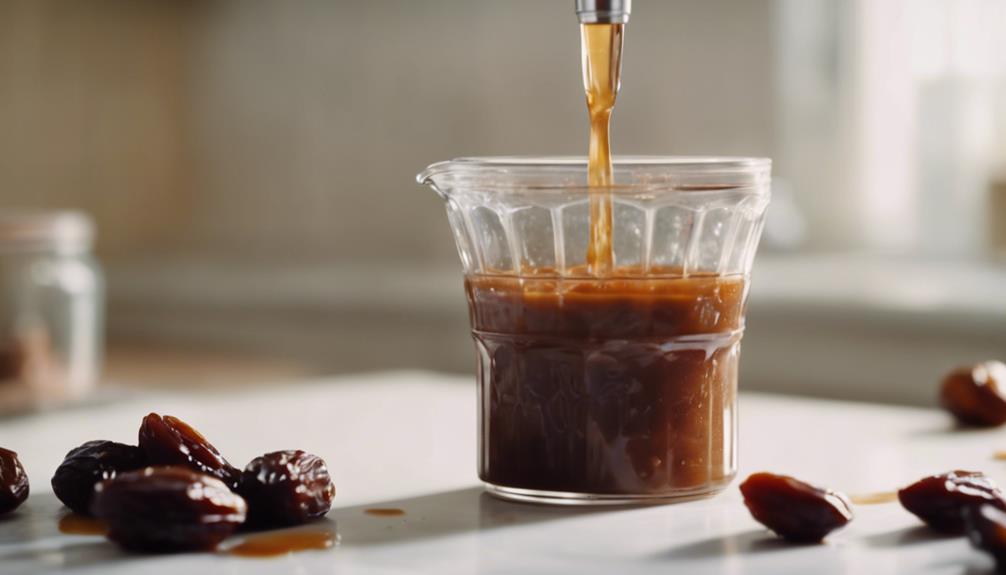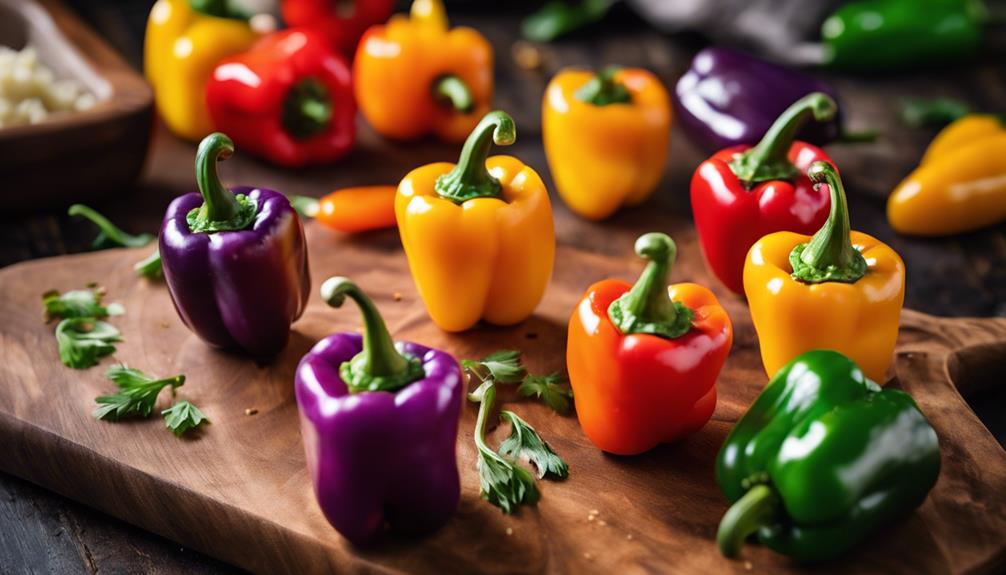Looking to enhance your baby’s nutrition in a delicious manner? Try making some spinach puree! This nutrient-packed green option is rich in iron, vitamin C, and other essential nutrients to promote your little one’s health and vitality. Not only does it help prevent anemia, but it also supports strong bones and good eyesight. Blend it with other purees for added flavor and variety. Be sure to store any leftovers properly to maintain its nutritional value. Explore the benefits of spinach puree and witness your baby flourishing with every spoonful! There’s plenty more to learn about this nourishing treat!
Key Takeaways
- Spinach puree is rich in iron, vitamin C, and vitamin K for your baby's growth.
- Enhance bone health and prevent anemia with spinach puree.
- Introduce spinach puree gradually from 6 months for optimal nutrition.
- Combine spinach with other purees for varied flavors and nutrients.
- Freeze spinach puree in small portions for easy meal prep and storage.
Benefits of Spinach Puree
Wondering what makes spinach puree a powerhouse of nutrition for your baby? Spinach is a superhero when it comes to providing essential nutrients for your little one. Packed with iron, vitamin C, and vitamin K, this green leafy vegetable is a superfood in its pureed form.
The high iron content in spinach puree helps prevent anemia and supports better iron absorption. Additionally, the rich vitamin K content promotes bone health and aids in proper blood clotting, ensuring your baby grows strong and healthy.
Furthermore, the beta carotene found in spinach puree is a great ally for your baby's vision and overall eye health. By incorporating spinach puree into your baby's diet, you're not only introducing a versatile ingredient but also giving a nutritious boost that contributes to their overall well-being and development.
Preparation and Cooking Steps

Get ready to whip up a nutritious treat for your little one with spinach puree!
You'll need a few simple ingredients, follow easy cooking instructions, and reap the numerous nutritional benefits.
Let's get cooking and boost your baby's health with this simple yet powerful recipe!
Recipe Ingredients
For preparing the spinach puree, gather baby spinach, green beans, olive oil, and garlic to create a nutritious blend for your baby. To highlight the essential ingredients, here's a simple table:
| Ingredient | Quantity |
|---|---|
| Baby Spinach | 2 cups |
| Green Beans | 1 cup |
| Olive Oil | 1 tablespoon |
| Garlic | 1 clove |
| Water | As needed |
These spinach leaves pack a punch of vitamins and minerals essential for your baby's growth. The green beans add a sweet touch, while the garlic and olive oil enhance the flavors. When choosing the baby spinach, opt for fresh and vibrant leaves to make sure of maximum nutrition. The olive oil not only aids in blending but also adds healthy fats to the puree. Lastly, the garlic provides a subtle savory note that babies often enjoy. Now that you have your ingredients ready, let's delve into the cooking process in the next section.
Cooking Instructions
To begin preparing the spinach puree, start by removing the stems from the spinach and ensuring a thorough wash before blanching in boiling water. Once blanched for about a minute, drain the spinach well.
Next, transfer the blanched spinach to a blender and blend until smooth. Depending on the desired consistency, you can add a little water or milk while blending.
Now that your spinach puree is ready, you can serve it to your little one either alone or mix it with other purees for added flavor and nutrients.
Nutritional Benefits
Once you've prepared the spinach puree using the cooking instructions provided, you'll be ready to explore the nutritional benefits and how the preparation and cooking steps enhance its health value.
Spinach puree is a powerhouse of nutrition for your little one. Packed with essential nutrients like iron, vitamin C, beta carotene, and importantly, vitamin K, this vibrant puree offers a significant boost to your baby's well-being.
Vitamin K plays an important role in blood clotting and bone health, making it an essential nutrient for growing babies. The cooking process may reduce the volume of spinach, but it concentrates the nutrients, ensuring that each spoonful of spinach puree delivers a punch of vitamins and minerals.
By following the simple steps to prepare and cook the spinach into a smooth puree, you're not only making mealtime enjoyable but also maximizing the nutritional benefits for your baby's development.
Serving Spinach Puree to Babies

When introducing spinach puree to your baby, consider incorporating it gradually into their meals to observe any potential reactions or preferences. Here are some tips for serving spinach puree to your little one:
- Mix and Match:
Blend spinach puree with other baby food purees like apples, sweet potatoes, or bananas to introduce new flavors and textures.
- Serve Warm or Cold:
Spinach puree can be served at room temperature, warmed slightly, or even cold depending on your baby's preference.
- Use Fun Utensils:
Encourage self-feeding by providing colorful spoons or small bowls for your baby to scoop up the spinach puree.
Storage and Freezing Tips

When storing spinach puree, remember to keep it in an airtight container in the fridge for up to 24 hours to keep it fresh.
For longer storage, freezing in ice-cube trays is a convenient option for portioning.
Prevent freezer burn by transferring the frozen puree to a freezer bag or container.
Enjoy easy access and portion control with this method.
Storage Duration Guidelines
Refrigerate the spinach puree in an airtight container for up to 24 hours to maintain its freshness.
When it comes to preserving this nutritious puree, here are some handy storage duration guidelines:
- Refrigeration: Keep the spinach puree chilled in the refrigerator for up to a day. This short-term storage method helps retain its flavor and nutrients, ensuring it stays fresh for your little one.
- Freezing: For longer storage, freeze the spinach puree in ice-cube trays. Once frozen, transfer the cubes to a freezer bag or container. This allows you to store the puree for up to 2 months without compromising its quality.
- Portioning: To make meal prep a breeze, freeze the spinach puree in small portions. This way, you can easily thaw only the amount you need for each meal, keeping the rest safely stored for later use.
Freezing Portion Suggestions
For convenient meal prep and portioning, freeze the spinach puree in ice-cube trays. This method allows you to easily pop out individual portions whenever needed.
Once frozen solid, transfer the spinach cubes into a freezer bag or container for long-term storage. Remember, frozen spinach puree can stay fresh and usable for up to 2 months when stored properly.
By freezing the puree in small portions, you can avoid waste and have quick access to just the right amount for your baby's meals.
When you're ready to use the spinach puree, simply thaw out the desired number of cubes and incorporate them into your recipes. This freezing technique not only helps in preserving the nutrients but also makes meal preparation a breeze.
Preventing Freezer Burn
To prevent freezer burn when storing spinach puree, make sure you use airtight containers or freezer bags.
Here are some tips to help you keep your spinach puree fresh and delicious:
- Remove Excess Air: Before sealing the containers, make sure to eliminate any extra air inside. This will help maintain the freshness of the puree and prevent freezer burn from occurring.
- Label Containers: It's important to label your containers with the date and contents. This simple step won't only keep your freezer organized but also help you track how long the puree has been stored, ensuring you use it before quality starts to degrade.
- Proper Storage Time: While properly stored spinach puree can last up to 2 months in the freezer, keeping track of the storage time is vital. Regularly check the containers for signs of freezer burn, such as dry and discolored patches, to guarantee the puree remains in top condition for your baby's meals.
Recipe Notes and Variations

Enhance your baby's mealtime experience by exploring different spices and herbs to add to the spinach puree. By incorporating various flavors, you can introduce your little one to a world of exciting tastes while boosting their love for food. Below are some creative ways to enhance your spinach puree:
| Spice/Herb | Flavor Profile |
|---|---|
| Cumin | Earthy and Warm |
| Garlic Powder | Savory and Aromatic |
| Nutmeg | Sweet and Nutty |
| Basil | Fresh and Herbaceous |
| Turmeric | Peppery and Earthy |
Experimenting with these additions can transform a simple spinach puree into a culinary delight for your baby. Whether you opt for a touch of cumin for warmth or a sprinkle of garlic powder for depth, each choice can elevate the overall taste experience. Don't be afraid to mix and match to find your baby's favorite combination!
Choosing and Handling Spinach

When choosing spinach, opt for vibrant green leaves that are free of tears or dark spots. Avoid any wilted or yellowing leaves, as they may indicate spoilage or nutrient loss.
Remember to handle and store your spinach properly to guarantee freshness and maximize its nutritional value for your baby's puree.
Spinach Selection Tips
Selecting fresh spinach for your baby's puree involves examining the leaves for specific qualities like color and texture to guarantee maximum nutrition.
Here are some tips to help you choose the best spinach for your little one:
- Look for vibrant green, crisp leaves without tears or darkening. Fresh spinach should have a lively color and a firm texture, ensuring it's packed with nutrients for your baby.
- Avoid limp or yellowing leaves as these signs indicate deterioration and a loss of essential vitamins and minerals. Opt for spinach that looks lively and fresh to provide the most nutritional value to your child's diet.
- Consider choosing smaller leaves, like baby spinach, for your puree. These tender leaves are easier to blend into a smooth texture, making them an ideal choice for baby food recipes.
Proper Spinach Storage
To maintain the freshness and nutritional value of your spinach, proper storage is essential. When choosing spinach, look for vibrant green leaves that are crisp, without tears or dark spots. Once you bring your spinach home, store it in the refrigerator in a loose plastic bag. Remember not to wash the spinach before refrigerating it, as moisture can lead to quick deterioration. By following this simple tip, you can extend the shelf life of your spinach for 3-4 days.
Before cooking your spinach, make sure to remove and discard the stems. This not only enhances the taste and texture of your dish but also ensures you're getting the most out of your spinach in terms of nutrition. Proper storage in the refrigerator is key to retaining the nutritional value of spinach, so make sure to handle it with care. By following these storage tips, you can enjoy fresh and nutritious spinach in your meals.
Spinach Preparation Techniques
For best results in preparing spinach, make sure you select vibrant green leaves that are crisp and free from tears or dark spots.
When handling this nutritious leafy green, follow these key steps:
- Choose Wisely: Opt for fresh spinach with vibrant green hues and crisp texture. Avoid leaves with tears or darkening, as they may indicate age or spoilage, impacting the quality of your spinach puree.
- Storage Savvy: Keep unwashed spinach in the refrigerator in a loose plastic bag. This helps maintain freshness for 3-4 days. Remember not to wash spinach before refrigerating to prevent rapid deterioration.
- Stem Strategy: Before whipping up your spinach puree, remove and discard the stems. This simple step improves the texture of the puree, ensuring a smoother consistency for your little one.
Spinach Puree Yield Insights

Understanding the yield of spinach puree is essential for accurately planning meals and portions for your baby. Spinach might seem abundant when fresh, but once pureed, its volume decreases markedly due to its high water content. For instance, a mere 150g of spinach yields just 1/4 cup of pureed spinach. This reduction in volume is important to take into account when preparing meals for your little one, as cooking spinach causes further shrinkage. To help you visualize this better, take a look at the table below:
| Amount of Spinach (g) | Yield of Pureed Spinach (cups) |
|---|---|
| 50 | 1/8 |
| 100 | 1/4 |
| 150 | 1/4 |
| 200 | 1/2 |
| 250 | 1/2 |
Nutritional Value of Spinach Puree

Rich in iron, vitamin C, and vitamin K, spinach puree provides essential nutrients crucial for your baby's growth and development. Here are some key nutritional benefits of this leafy green vegetable:
- Beta Carotene Boost: Spinach puree is a great source of beta carotene, which supports good vision and eye health in babies.
- Nutrient Powerhouse: Introducing spinach puree to your baby's diet is a versatile way to provide nutrients like folate, fiber, and antioxidants, promoting overall health.
- Anemia Prevention: Including spinach puree in your baby's meals can help prevent anemia and support healthy bone development, thanks to its rich iron content.
Popular Spinach Puree Combinations

Spinach puree can be creatively combined with a variety of ingredients to enhance both the flavor and nutrition of your baby's meals. For a tasty and nutritious blend, consider mixing washed spinach with sweet potatoes, carrots, or butternut squash. These combinations offer a delicious way to introduce essential vitamins and minerals to your little one's diet.
If you're looking to add some fiber and variety, try adding green beans or peas to the spinach puree. Your baby will enjoy the different textures and flavors while benefiting from the added nutrients.
To create a sweet and savory option, blend spinach puree with fruits like apples or pears. This combination not only appeals to your baby's taste buds but also provides a good source of vitamins and antioxidants.
For a protein boost, consider mixing lentils or chickpeas with spinach puree to create a hearty and satisfying meal. Don't be afraid to experiment with spices like cumin, garlic, or mild curry powder to elevate the taste of the spinach puree and introduce new flavors to your baby's palate.
Expert Feeding Recommendations

For expert feeding recommendations when introducing spinach puree to your baby, consider the following guidelines:
- Timing is Key:
Start introducing spinach puree around 6 months of age when your baby begins solid foods. This guarantees they receive a variety of nutrients essential for their growth and development.
- Mix and Match:
Spinach puree is versatile and can be combined with other purees like sweet potatoes or carrots to enhance flavors and textures. Get creative with combinations to keep mealtime exciting for your little one.
- Start Small:
Begin with small portions of spinach puree to gauge your baby's acceptance and watch for any potential allergic reactions. This gradual introduction helps monitor their tolerance and enjoyment of this nutritious option.
Following these feeding recommendations will help you navigate the introduction of spinach puree smoothly, providing your baby with a healthy and delicious start to their solid food journey.
Frequently Asked Questions
Is Spinach Puree Good for Babies?
Spinach puree is excellent for babies! Packed with iron, vitamin C, and other nutrients, it can support their growth and health. Introduce it around 6 months, starting with small amounts to monitor any allergic reactions.
What Is the Healthiest Way to Eat Baby Spinach?
For the healthiest way to eat baby spinach, consider steaming for nutrient retention, consuming raw in salads for vitamin C, adding olive oil for fat-soluble vitamin absorption, blending into purees for digestion, or cooking with liquid to preserve water-soluble vitamins.
What Can Be Made From Spinach Puree?
You can create a variety of dishes with spinach puree, such as pasta sauces, soups, smoothies, and baked goods. It adds nutrition and flavor to your meals. Get creative and explore different ways to incorporate it!
How to Cook Spinach for Maximum Nutrition?
For maximum nutrition, blanch or steam spinach briefly to retain nutrients and color. Avoid overcooking to prevent nutrient loss. Pair with vitamin C-rich foods to boost iron absorption for best health benefits.
Conclusion
To sum up, spinach puree is a powerhouse of nutrition for your little one. It's like a superhero in a bowl, ready to give your baby the strength and energy they need to conquer the day.
So whip up a batch of this green goodness and watch your baby thrive with each spoonful.
With its easy preparation, versatile serving options, and long-lasting storage capabilities, spinach puree is a must-have in your baby's diet.
Give it a try and see the difference it makes!










